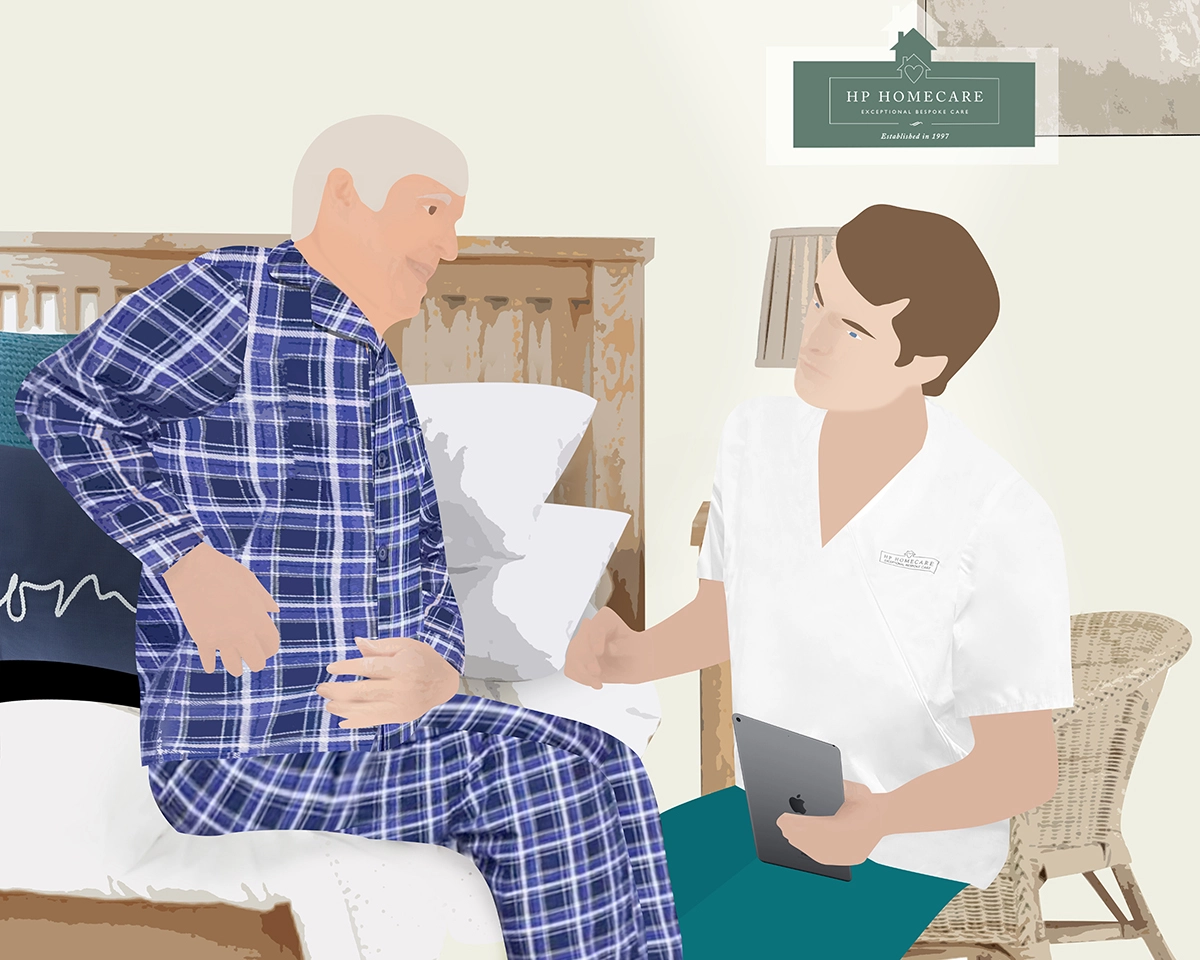
Stepping Towards Recovery: Your Guide to Hip Replacement Recovery with Estimated Timeline and Milestones
- Published on dd
- Authors

- Author
- HP Homecare
Hip replacement surgery can be life-changing for those suffering from chronic hip pain and mobility impairments. Whether this is due to arthritis, injury, or another condition, the decision to go ahead with a hip replacement could mean the beginning of a journey towards improved movement and an enhanced quality of life. As part of your decision-making, it is important to consider the hip replacement recovery process, hip replacement recovery timeline, and the milestones along the way to ensure a successful outcome.
In this guide by HP Homecare, we’ll advise you on what to expect during your hip replacement recovery journey.
Understanding the Procedure
Before discussing the hip replacement recovery process, a basic understanding of the surgery itself can be informative. Hip replacement surgery, also known as total hip arthroplasty, involves removing damaged or diseased parts of the hip joint and replacing them with artificial components made of metal, ceramic, or plastic (OrthoInfo, 2024). The goal of this surgery is to decrease pain, improve mobility, and restore proper functioning of the hip joint.
Preparing for Hip Replacement Recovery
Preparation for hip replacement recovery begins before the surgery has even begun, and even before you enter the hospital for your surgery. Your healthcare team will share with you the recommended ways of preparing your home, including removing any potential fall hazards, installing handrails or grab bars, and arranging for support with daily tasks, if needed. In addition to this, you may be given advice on how to quit smoking, medications may need to be adjusted, and preoperative exercises could be recommended to strengthen the muscles around the hip joint.
The Hip Replacement Recovery Timeline: When Will I Walk Unaided After a Hip Replacement?
Every individual’s hip replacement recovery journey will be unique, but there are some general milestones that most patients can expect to achieve, before reaching the end goal of walking unaided after a hip replacement, and returning to your much-loved physical hobbies.
Days 1-3 Post-Surgery:
You’ll likely spend a few days in the hospital for monitoring of your overall health following surgery, and initial rehabilitation exercises prescribed by an inpatient team.
Physiotherapy will begin soon after surgery, with a focus on gentle exercises to improve your circulation, prevent blood clots from forming, and encourage a small amount of mobility.
Weeks 1-6 Post-Surgery:
Once discharged from the hospital, you’ll continue physiotherapy as an outpatient, in a clinic or community-setting, or at home. The physiotherapists will work to gradually increase your activity levels, starting with very short walks, before increasing the duration of these; the professionals will always be mindful of how well these bursts of exercise are being tolerated.
Pain and discomfort from the procedure will gradually ease as your body works to heal itself.
2-6 Months Post-Surgery:
By this point, significant improvements in mobility and a reduction in pain should be noticeable.
Physiotherapy will continue, with a focus on strengthening exercises, increasing the range of motion of the hip joint, and returning to some daily activities such as climbing stairs.
Considering your hip replacement recovery timeline, you may be able to start driving again, and return to work, if the nature of your job allows this.
6-12 Months Post-Surgery:
Mobility and strength of the hip joint should be improving every week, and your physiotherapy team may work with you to gradually reintroduce more strenuous activities, such as hiking or swimming.
Follow-up appointments with your surgery team will monitor your physical progress, answer questions, and address any concerns.
Celebrating Milestones (Big and Small!)
During your hip replacement recovery journey, it’s so important to celebrate the milestones, whether big or small, to highlight just how far you have progressed since surgery.
Whether it’s walking unaided, climbing stairs pain-free, or returning to your local running club, each achievement is a true testament to your hard work and dedication to healing.
Hip replacement surgery offers a huge amount of hope for individuals suffering from chronic hip pain and mobility impairments, providing the opportunity to work towards a more active, fulfilling life. By having a good understanding of the recovery process, setting realistic recovery milestones, and staying committed to your physiotherapy, your recovery journey can be supported by confidence and optimism.
Remember – hip replacement recovery takes time. Be patient with yourself, and do try to persevere when it feels challenging; the rewards are so worth it!
